Abby Feinstein - Flintlastic Turns 21 at WRE! - PODCAST TRANSCRIPT
October 21, 2024 at 7:00 p.m.Editor's note: The following is the transcript of a live interview with Abby Feinstein of CertainTeed. You can read the interview below or listen to the podcast.
Intro: Welcome to Roofing Road Trips, the podcast that takes you on a thrilling journey across the world of roofing. From fascinating interviews with roofing experts to on-the-road adventures, we'll uncover the stories, innovations and challenges that shape the rooftops over our heads. Fasten your seatbelts, and join us as we embark on this exciting Roofing Road Trip.
Heidi J Ellsworth: Hello, and welcome to another Roofing Road Trips from Roofers Coffee Shop. This Roofing Road Trips is live at Western Roofing Expo.
Abby Feinstein: Whoo.
Heidi J Ellsworth: I am here with a returning favorite, one of my favorite people in roofing, Abby. Welcome to Roofing Road Trip.
Abby Feinstein: Heidi, nice to see you. Thank you for having me. Happy to be here.
Heidi J Ellsworth: This is fun in person. We're usually on a Zoom and talking to each other.
Abby Feinstein: I know, yeah.
Heidi J Ellsworth: This is really cool right here.
Abby Feinstein: This is great.
Heidi J Ellsworth: Please introduce yourself, and tell us a little bit about what you do with CertainTeed.
Abby Feinstein: Okay.
Heidi J Ellsworth: Okay.
Abby Feinstein: I'm Abby Feinstein. I'm the Director of Product Management, Marketing, Sustainability. Yeah, I mean, in a nutshell, we're responsible for making sure that the product line reflects what the market demands and for me, that's on top of commercial buildings and infrastructure, including roofing.
Heidi J Ellsworth: Okay. I love what you just said. I have never heard it said that way before.
Abby Feinstein: Which part?
Heidi J Ellsworth: The part about the products reflect what the market needs.
Abby Feinstein: Yeah. That's product management in a nutshell.
Heidi J Ellsworth: It is. I don't think I've ever heard anybody say it quite like that. That's really cool. You are celebrating a big year.
Abby Feinstein: Yep.
Heidi J Ellsworth: Talk to me about that.
Abby Feinstein: Sure. Last year, we celebrated our 20th year of Flintlastic SA being in service. This year, naturally we're celebrating our 21st year, which is fun, right, because in the United States, you have to be 21 to drink, so we said, you know, cheers.
Heidi J Ellsworth: You're legal now?
Abby Feinstein: Cheers to 21 years. Yeah, that's right. Our Flintlastic SA can just get, when it's 5:00 ...
Heidi J Ellsworth: Done.
Abby Feinstein: ... beers. Yeah.
Heidi J Ellsworth: Up on the roof. There you go.
Abby Feinstein: Up on the roof. That's right.
Heidi J Ellsworth: I love it. Okay. You and I have had some awesome podcasts and lunch-and-learns, really talking about the SA innovation, technology, how important it is, time studies.
Abby Feinstein: Yep.
Heidi J Ellsworth: Talk a little bit about these last 21 years and really bringing SA innovation into the market.
Abby Feinstein: Sure. In terms of technology innovation, to be honest, the formulation is largely what it was 21 years ago.
Heidi J Ellsworth: It works. It works.
Abby Feinstein: It works, so of course we've done, like any manufacturer, ways of making that less expensive. We've qualified different raw materials, so that we can help bring costs down and keep it competitive without compromising quality to it, but the base formulation is there. I can't give away our trade secrets. There's different things that we do to improve adhesion, have it go down consistently every time, I would say. We've done different things with our films, both on the top and the bottom.
I think at the core, Flintlastic SA takes the magic of modified bitumen, which is a very tried-and-true technology and you've got a reinforcement mat in the middle for the structure and the top coating and the back coating and that gives it the muscle. We've finessed that, the SBS on the backside, to be just as sticky as possible and that's where the SA comes in. We've really taken the core of what's always been there since the '70s and just put a fancy coating on the back, so that you no longer need a kettle, a flame, to put it down.
Heidi J Ellsworth: You get the performance of the modified bitumen, but with a new age in safety and how to apply it.
Abby Feinstein: That's right.
Heidi J Ellsworth: You've done the time studies on this?
Abby Feinstein: We have. Not only is this faster to apply than a hot asphalt or a very traditional modified bitumen or torch even, but we did time studies, one-to-one comparisons on the same roof. We have a video of it, the same roof with TPO. In fact, a multi-ply modified bitumen system, which is giving you multiple layers of waterproofing, went down faster than a single layer of TPO.
Heidi J Ellsworth: When you really think about that, and you think about what's happening with severe weather right now and how a redundant system, a multi-ply system, is being required in a lot of areas, but the fact that that's going down just as fast if not faster than a single-ply, that's pretty remarkable.
Abby Feinstein: It is. I think originally we did the time study with a consultant, and it was a written white paper. I actually met somebody on an airplane that had read the paper, but said, "I'm a roofer and I just don't believe what I'm reading." They needed to see it, which is why I said, "Well, then we need to film it."
Heidi J Ellsworth: Right.
Abby Feinstein: Because it is. You wouldn't think.
Heidi J Ellsworth: No, you wouldn't.
Abby Feinstein: Honestly, most of the TPO rolls are 10 feet wide, some larger and the fact that our rolls ... and all modified rolls, it's not just CertainTeed ... but are three feet wide. You need less people to handle them and you're just a little bit more agile and nimble, and you can kick it out and go a little faster. Once the base sheet is down, get a couple rows in, you can start going over that with the cap sheet. It's just fast, very fast.
Heidi J Ellsworth: Yeah. There is a lot of discussion out there right now. We just had a couple conversations on this about safety-wise, OSHA width of rolls and how hard it is or not hard on the installers on the roof. There's a lot of benefits to those smaller rolls.
Abby Feinstein: Yeah. Carrying them, for sure. I mean, you don't have a crew that's picking up a 10-foot-wide roll of TPO. You're dealing with cranes, you know. You don't need any of that. In terms of health and safety, just I mean honestly, not having the hot kettle. Not dealing with 350-degree asphalt, not dealing with an open flame with a torch or even the solvent-based adhesives, whether it's TPO or modified. Having essentially all of that done at the factory and then just sticking the factory-applied film on it, it greatly reduces the health and safety risks afforded on the roof. It's really something to celebrate.
Heidi J Ellsworth: Twenty-one years.
Abby Feinstein: I think so.
Heidi J Ellsworth: I really do. What are you hearing from your contractors? I mean, you and I probably watched the time studies. What was that, two or three years ago maybe, that you did this?
Abby Feinstein: Yeah.
Heidi J Ellsworth: We've had it on the site and a lot of contractors, we've done podcasts on it. What are you hearing from the contractors who have really started putting their business around this and talking to building owners about the redundancy, about the performance, the longevity, all of that?
Abby Feinstein: Okay. Well, I'll say this, but I can only say it to contractors. If you're a building owner, you need to close your ears. Did they close their ears?
Heidi J Ellsworth: Yes, they did.
Abby Feinstein: Okay.
Heidi J Ellsworth: We're safe in here.
Abby Feinstein: The contractors are loving it, because what we heard, ever since Covid, there was a limit on fasteners. You couldn't get insulation, there was a run on single-ply and there has been a slow and steady ... and this year we saw it big-time ... resurgence into modified and a lot of that is with SA. What we're seeing is they're getting on more jobs, they're putting it down faster, it's less labor-intensive and they're making more money.
Heidi J Ellsworth: They're making more money.
Abby Feinstein: Right.
Heidi J Ellsworth: It's checking all the boxes.
Abby Feinstein: It has a higher material cost, which you can mark up and that's great and pass it on, pass those costs on to customers, but the labor is less and so the install cost is comparable but the profits are higher. We are hearing that. Folks that have moved over, whether it was because of Covid or whatever, we are seeing folks that didn't go back to single-ply once it was available, because they could see that they could make more money with SA.
Heidi J Ellsworth: Let's just talk about the durability of that system.
Abby Feinstein: Sure.
Heidi J Ellsworth: Because one of the things, you said sustainability. You are focused on that. Sustainability is about how long a system can stay on the roof and perform before having to be replaced or covered or whatever. Mod bit, that's what it does. It's there. What are you seeing from the sustainability and just the longevity of those systems on the roof?
Abby Feinstein: Yeah. I mean, I think sustainability encompasses a lot of things. It's the embodied energy to make the product. It's the freight to get it to the ... so I think there are a lot of elements. We could talk about sustainability for a half hour, just on that, but for sure the durability of that and whether or not you're going to need to tear that off at the end is all part of circular economy and sustainability. I think what I like about it ... and this is a little bit Flintlastic and a little bit Smartcoat, which we've talked about ...
Heidi J Ellsworth: Right, yes.
Abby Feinstein: ... is eventually, I mean, if you maintain a two-ply modified system, you've got 80 mils just as the base sheet and then you've got a whole nother cap sheet which is thicker than that.
Heidi J Ellsworth: Right.
Abby Feinstein: You have redundancy and more thickness and puncture resistance to begin with, with solid, proven elasticity to handle building movement. If you maintain that roof, even if your warranty's 15 years, to be honest, you probably have a 30-year roof. If you've got a 20-, 25-year modified system, that could probably last 50 years if it was maintained correctly. At some point, when you reach the end of that life, there's nobody telling you that you need to tear that off, because then you can coat it, right? Then you can put down a restorative system, re-engage the roof and now you're coating with Smartcoat for the rest of its life.
Heidi J Ellsworth: You have that durability already there.
Abby Feinstein: Built into the base. That's right.
Heidi J Ellsworth: That's been a big topic all day today on Coffee Conversations and everything, is talking about service and maintenance programs. Really when you are maintaining that roof every year, it does lead to a very, very long life.
Abby Feinstein: If you're a contractor, it should be a very long relationship.
Heidi J Ellsworth: Yes.
Abby Feinstein: That's what you want. Put a roof down, put a repair and maintenance program together with your client. Watch after that roof, treat it like it was your own. Hopefully you want to be in business for 30 years or more. At that point, put down a restoration system.
Heidi J Ellsworth: I know.
Abby Feinstein: Give your customer that vision from the beginning, so you're putting down a bulletproof system that you're going to need to do very little with for the next 20 to 30 years. Then the plan is to not tear it off in the end, but to coat it.
Heidi J Ellsworth: Right. Okay, we're at the Western States. We're looking at a state like California right now. I mean, just think about 20 years from now, 10 years. It's already happening right now. They are charging if you're not recycling, if you're going into landfills, so this solves problems, especially in California but everywhere, for really being able to have the type of product that you can show that long vision, because they're going to spend so much money down the road that they don't have to if they do it right in the first place.
Abby Feinstein: Yeah. I think homeowners and building owners alike are catching wise to that. You have to build for the long haul.
Heidi J Ellsworth: Yes.
Abby Feinstein: Yeah. I'm going to go back to that in California too, just on the SA so we can circle back around.
Heidi J Ellsworth: Sure.
Abby Feinstein: It's the type of system. No VOCs. I mean, in California, this is exactly what they want. It fits in with California everywhere, but we see it. I mean, to play that out, because you have no volatile chemicals and adhesives that you're using to put the system down and you don't have the smell of the asphalt that you would normally get with modified, with a torch or a kettle, so we see it very popular nationwide. Hospitals, schools, areas where occupant disturbance is a problem.
Heidi J Ellsworth: Right, exactly.
Abby Feinstein: That's a microcosm that is the State of California.
Heidi J Ellsworth: Yeah. the whole nine yards.
Abby Feinstein: Yeah. When we're looking at it nationally, one of the last things I'm going to talk about is severe weather. I mean, the severe weather. We've just had a terrible hurricane in Florida. We're seeing severe hail we've never seen before, and it's not just in the Midwest anymore. It's everywhere.
Heidi J Ellsworth: No. Welcome to climate change.
Abby Feinstein: Yes, exactly. These are the kind of products you need to be offering your building owners.
Heidi J Ellsworth: Yes, resilient systems.
Abby Feinstein: We had some contractors that were really dedicated torch contractors for a long time, and they wanted to see our wind uplift resistance of SA and they go head to head. We actually put out a technical bulletin, because we were like, "Oh, if they're thinking about this, of course other contractors are thinking." You wouldn't think that a pressure-sensitive adhesive would afford you the same wind uplift that a torch does. I get it. I wouldn't think so either. It's like a big sticker, right, but it does.
Heidi J Ellsworth: It does.
Abby Feinstein: It really sticks. What we see in our lab trials ... and this is the way they do the wind uplift test ... is you set the system up and it sits before you try to blow it off. The longer an SA system sits, that bond only increases as it ages.
Heidi J Ellsworth: Right.
Abby Feinstein: We do a two-hour, a 24-hour and then 30 days and it just grows. Really ... I said this earlier ... it really checks all the boxes. Installation, helping with labor savings, helping with the labor shortage and then really delivering the right products for the building owners, on the residential or commercial side. Because on the residential side, we see it a lot. They like all of our colors and it matches our shingles, and it's quick to get up on whether it's a full flat roof or just a garage. On the commercial side, we've got our bright white, we've got our CoolStar. Yeah, what everybody needs. All of the above.
Heidi J Ellsworth: Yes. I love it. Okay, celebration this year, 21 years. Any new things? I always have to ask you, because you always have cool stuff going. Anything people should be aware of coming up into 2025? Just some new product development, not just about Flintlastic, but everything? What do you have? Anything you can share with us?
Abby Feinstein: I wouldn't say we're working on breakthrough, totally new. We're working on honing.
Heidi J Ellsworth: Aha. I love it.
Abby Feinstein: It's both on the product side and on the process side. One of the things we're really proud of right now is we're working on a recycling center at Little Rock. We're turning our Little Rock manufacturing facility into zero waste. We're going to take all the scrap from all of our Flintlastic products, and we have found a way to incorporate it that does not change the properties of the product at all.
Heidi J Ellsworth: That's great.
Abby Feinstein: That's a big thing. That won't be a new product, but it'll just be an improvement to our existing products, but that's something that's got a lot of our attention. We're working on making our CoolStar products brighter and whiter for longer, so that's something to keep an eye out for. About a year or two ago, back to Flintlastic SA, we launched Arctic Edge, if you remember.
Heidi J Ellsworth: Yes, I do. Yep. It's on the site.
Abby Feinstein: When you say checking the boxes for everybody. One of the I guess holes for SA was cold temperatures. It was 50 degrees and rising, so we filled that hole with Arctic Edge, but it's not quite cold enough. Right now it goes down to 32, 35 degrees. What we're hearing from our friends in the North ... not here in Western States but actually Kansas and higher, and especially the folks up in Canada ... is that it's just not cold enough to get that all year round, so we're working on making Arctic Edge colder, so keep an eye out for that. That's it.
Heidi J Ellsworth: That just totally rings the right bell, because what we're talking about is you said 21 years and you haven't really changed because it was such a good product. You've only enhanced. That's across the board. When you have the quality products, you do need to just keep honing.
Abby Feinstein: We're honing.
Heidi J Ellsworth: Keep doing it. I love it.
Abby Feinstein: Yeah, finding ways to make them more sustainable, less embodied energy at the plant, more recycled materials. That's really where our focus is on, sustainability.
Heidi J Ellsworth: Sustainability, we need that, along with all the durability we can get with the severe weather.
Abby Feinstein: Yeah. That's why I'm at CertainTeed, [inaudible 00:16:13] globally, huge sustainability goals. Honestly, I mean, it's why I'm here.
Heidi J Ellsworth: It's what you believe.
Abby Feinstein: It's what I believe in, yeah.
Heidi J Ellsworth: Yeah. I love it. I love these conversations we have, Abby. Contractors out there who are saying, "Wait a minute, I should be doing this, I should be involved," how do they get started?
Abby Feinstein: Yeah. If you've never used Flintlastic SA, I would certainly ... well, we have territory managers everywhere. Yeah, I would start with your territory manager. Walk into any roofing distributor and they would know who the local CertainTeed low-slope territory manager is. Then from there, really it's about training. There's what we can do in your neck of the woods, and then if you want to get further in, come down.
We do a lot of a two-day hands-on program to go from soup to nuts out of our Little Rock facility. That's training, training, training, training. We have a lot of stuff digitally so we can get you started, whether books or video. Your territory manager can do some local hands-on stuff with you, then I think take it up a notch and come down to Little Rock.
Heidi J Ellsworth: That sounds great. Man. I love it. I love it so much. Thank you as always, and congratulations. Happy anniversary.
Abby Feinstein: Thank you. 21 years. Cheers.
Heidi J Ellsworth: Cheers, yes. Thank you all for listening. This is a live Roofing Road Trips from Western Roofing Expo. You can catch all of our podcasts under the RLW Navigation under Roofing Road Trips or on your favorite podcast channel. Be sure to set your notifications so you don't miss a single episode. We will be back again. Watch for us, Roofing Road Trips.
Outro: If you've enjoyed the ride, don't forget to hit that Subscribe button and join us on every roofing adventure. Make sure to visit rooferscoffeeshop.com to learn more. Thanks for tuning in, and we'll catch you on the next Roofing Road Trip.
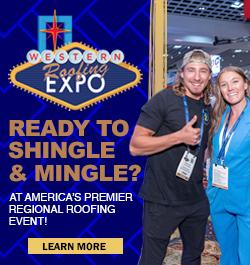


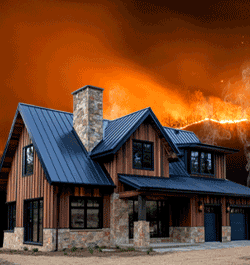









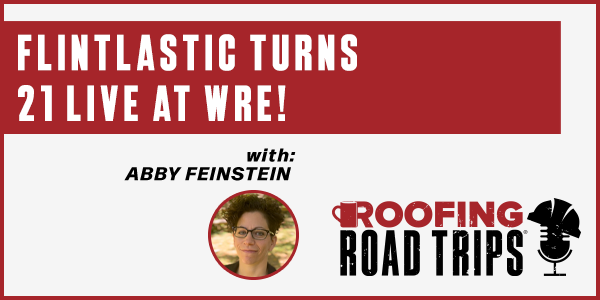

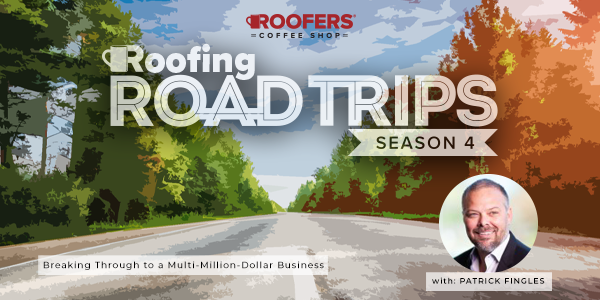


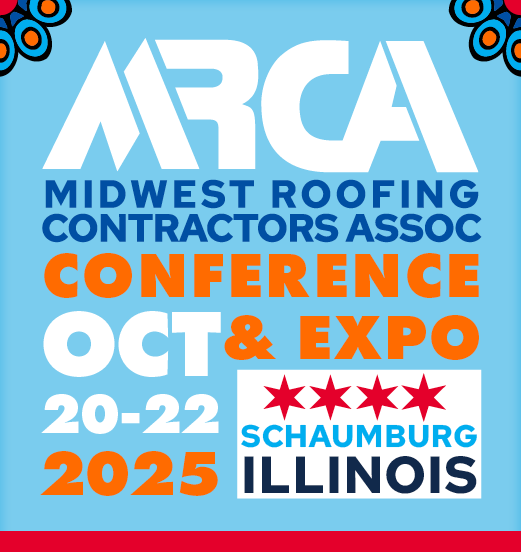




Comments
Leave a Reply
Have an account? Login to leave a comment!
Sign In